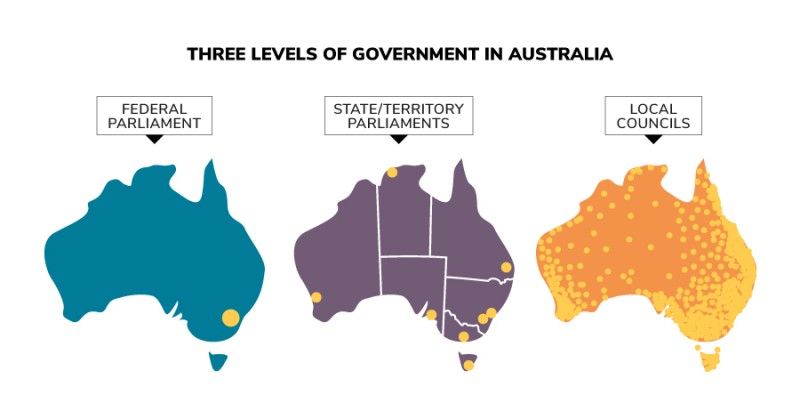Why doesn't the federal government control all funding?
Thank you for your question, Meg. The short answer is that since 1901 Australia has been a federation of states, with three levels of government having responsibility for various areas of funding and expenditure. This federal arrangement is determined by the Australian Constitution.
Sections 51 and 52 of the Constitution lists the areas in which the Australian Parliament can make laws. These national areas of responsibility include funding invalid and old-age pensions, defence, Medicare and immigration. To pay for this expenditure, the federal government raises money by collecting taxes on incomes, goods and services, and company profits.
The states and territories also provide services to Australians, including hospitals, schools, roads and public transport. State and territory governments receive more than half their money from the federal government, and also raise money through taxes.
Three levels of government in Australia

Parliamentary Education Office (peo.gov.au)
Description
The three levels of government – the law-making bodies in Australia. The Federal Parliament is located in Canberra, the nation's capital. State/territory parliaments are located in the capital cities of each of the 6 states and 2 territories. Local councils are located around Australia in each local council division.
This work is licensed under a Creative Commons Attribution-NonCommercial-NoDerivs 3.0 Unported License.
You are free to share – to copy, distribute and transmit the work.
Attribution – you must attribute the work in the manner specified by the author or licensor (but not in any way that suggests that they endorse you or your use of the work).
Non-commercial – you may not use this work for commercial purposes.
No derivative works – you may not alter, transform, or build upon this work.
Waiver – any of the above conditions can be waived if you get permission from the copyright holder.
